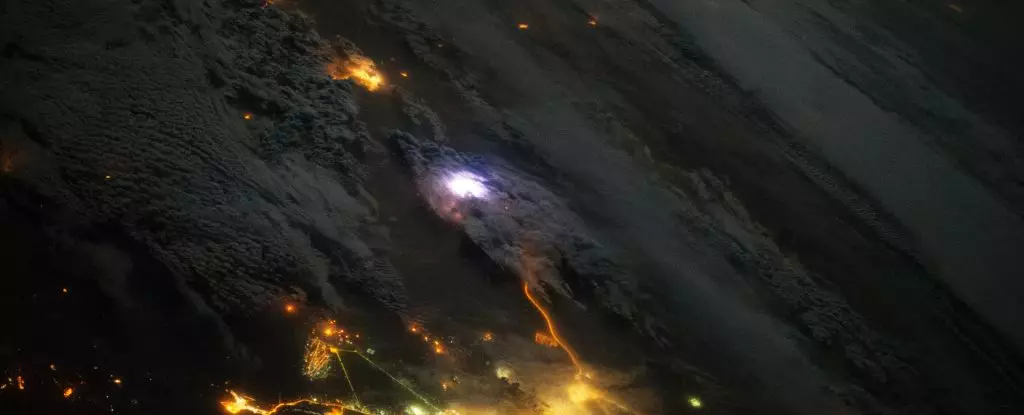Lightning storms are often celebrated for their breathtaking beauty and force; however, a newly unearthed connection between these terrestrial wonders and high-energy phenomena in space reveals a complex interplay that extends well beyond Earth’s atmosphere. Recent research has uncovered that lightning can spur the release of highly energetic “killer” electrons from the Van Allen radiation belts—a phenomenon that poses significant implications for both our technology and human health in space.
Understanding Lightning and High-Energy Electrons
Lightning storms are not merely atmospheric occurrences but rather intricate systems that generate powerful electromagnetic pulses. These pulses can have profound effects not only locally but also on a wider scale, affecting conditions in space. This connection becomes apparent when considering the Van Allen radiation belts, consisting of two distinct layers that trap charged particles ejected by the Sun’s solar wind. These belts, primarily formed by Earth’s magnetic field, serve as a shield against harmful radiation but can also become sources of danger in their own right.
A striking aspect of the research is the characterization of “killer electrons.” These energetic particles move at speeds approaching that of light, endowing them with the ability to penetrate satellite materials and cause significant damage. For astronauts, exposure to these electrons presents serious health risks, including potential carcinogenic effects from radiation. Therefore, understanding the origins and dynamics of these electrons is crucial for safeguarding space missions.
The Van Allen radiation belts fluctuate between 640 and 58,000 kilometers above the Earth’s surface, serving as a buffer against the anti-human elements that would otherwise bombard the planet. However, new findings suggest these belts are not as stable as previously assumed. Analysis of satellite data revealed unexpected spikes in high-energy electrons correlated with thunderstorms occurring in the atmosphere below. This connection underscores the dynamic nature of the radiation belts, which have long been regarded as relatively uniform in nature.
Indeed, the researchers led by aerospace engineer Max Feinland from the University of Colorado, Boulder, discovered an astonishing 45 surges of high-energy electrons from the years 1996 to 2006. Each surge correlated to lightning activity below, leading to the conclusion that there exists a hitherto underappreciated link between atmospheric events and phenomena in space.
An essential element of the discovery involves the concept of whistler waves—low-frequency electromagnetic waves generated during lightning strikes. As these waves travel through the plasma of the radiation belts, they can catalyze a series of interactions among trapped electrons. Initially, lower-energy electrons can transfer their kinetic energy to higher-energy electrons, resulting in the creation of the aforementioned killer electrons. This causal chain reaction illustrates the remarkable ways that seemingly isolated phenomena like thunderstorms can influence the broader cosmic environment.
However, the exact mechanics driving this transfer of energy remain elusive. Further research is needed to explore how factors such as solar activity may influence the generation of these lethal electrons. Intriguingly, the variability of plasma densities and electromagnetic waves adds yet another layer of complexity to our understanding of this interaction.
For astronauts and space equipment alike, the ramifications of these findings cannot be overstated. The presence of killer electrons introduces a formidable challenge to the safety and longevity of satellites and human subjects in space missions. Scientists must now consider storm conditions on Earth when planning for missions, as lightning storms may coincide with peaks in hazardous radiation.
This discovery also highlights the interdisciplinary nature of research, bringing together aspects of meteorology and space science in ways previously unimagined. Embedding this new understanding into mission planning and technology development will be crucial as space exploration becomes more ambitious.
While storms may captivate us with their intensity, they harbor secrets far beyond our planet’s boundary. As research continues to unravel the ties between lightning and high-energy cosmic particles, we gain invaluable insights into our universe. Future studies will illuminate the conditions necessary for generating killer electrons, allowing more effective risk assessments for those journeying into space.
For now, the lessons gleaned indicate that both scientists and astronauts should remain vigilant, navigating the delicate balance of atmospheric phenomena and cosmic dynamics. The next time a storm rolls in, it may be wise to heed the weather, not just for its immediate effects, but for the unexpected cosmic ripple it may create.


Leave a Reply